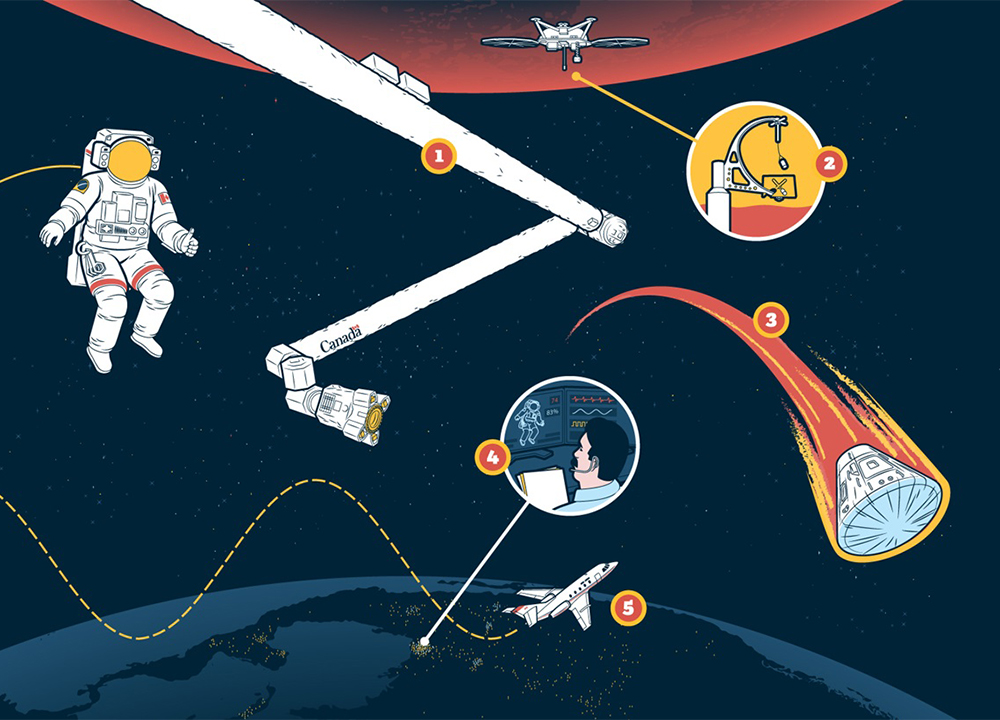Our creativity and ability to make and fix things turned humans into space voyagers. So next time you look up, take a break from connecting the dots of Aquarius and contemplate a constellation of shining achievements.
1: Raise an Arm
For 30 years, the 15-metre Canadarm did all kinds of heavy lifting for NASA's space shuttle program: fixing satellites, positioning astronauts and moving cargo. Development of the remote-controlled mechanical arm at the National Research Council was led by Garry Lindberg, '60 BSc(EngPhys), '12 DSc (Honorary).
2: Ride the (Martian) Wind
A little instrument was a huge help measuring wind speed and direction for the Phoenix Lander on Mars in 2008. The Telltale, designed in part by U of A mechanical engineering professor Carlos Lange, was a device to measure wind conditions so the Rover knew when to take samples. Rover (and Telltale) operated for five months before Martian winter disabled them.
3: Chill Under Pressure
The old tin can gets pretty hot. A spaceship re-enters Earth's atmosphere at a steady clip of 40,000 kilometres an hour and the heat it generates had to be overcome before space flight was viable. Bryan Erb, '52 BSc(CivEng) MSc '55, '90 DSc (Honorary), was a big part of the team behind designing the heat shields that let astronauts return home safely.
4: See the Doctor
As a NASA flight surgeon in 2009, engineer and physician Doug Hamilton, '80 BSc(ElecEng), '84 MSc, kept an eye on patient Robert Thirsk, who was hurtling through space at eight kilometres per second onboard the International Space Station. He monitored the astronaut's health from Johnson Space Center on Earth. Hamilton also recognized and mitigated the risk of electric shock to spacewalking astronauts, for which NASA awarded him a medal.
5: Board the Puke Plane
In 2017, Ryan Baily, '16 BSc(MechEng), and PhD student Farhad Ismail hitched a ride on the National Research Council's Falcon 20 - the puke plane - travelling in a sweeping arc to create near-zero gravity. They were testing how droplets form in microgravity as part of research into how 3D printers will work in space. If you're on a trip to Mars and a crucial piece breaks, you can't send out for spare parts.

We at New Trail welcome your comments. Robust debate and criticism are encouraged, provided it is respectful. We reserve the right to reject comments, images or links that attack ethnicity, nationality, religion, gender or sexual orientation; that include offensive language, threats, spam; are fraudulent or defamatory; infringe on copyright or trademarks; and that just generally aren’t very nice. Discussion is monitored and violation of these guidelines will result in comments being disabled.